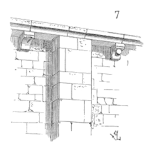
Article first posted at Conscious Reliability by James Reyes-Picknell, Jesus Sifonte, and team.
Managing assets to make them deliver the products and services we need now and in the future is the essential purpose of Asset Management. However, Asset Management is more about obtaining value from assets than what you do to the assets. It is about utilizing assets to deliver value to your organization while attaining corporate goals. Human capital is an essential element of the whole asset management process from strategy to operation.
[Read more…]











